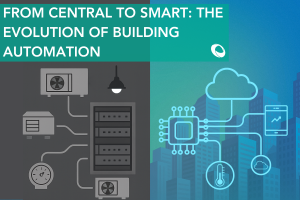Why are small buildings overlooked with the latest building technolgy?
It is estimated that 60% of the world’s commercial buildings would be classified as ‘small buildings’.
These buildings range in size, and we see them everywhere we look. The definition for small building varies from place to place, generally small buildings can be classified as those buildings under 50,000 square feet.
Small buildings typically include:
- Community Centres
- Independent Medical Buildings
- Low-rise Commercial Buildings
- Shopping Precincts
- Libraries
- Schools
- Some Recreational Facilities
In our day-to-day lives, we are constantly interacting with small buildings, with each of us spending a significant amount of our time within them. That is why it is such an interesting phenomenon that small buildings are often overlooked when it comes to the latest technology or system improvements. With so many of the world’s buildings in this category, what are we doing to improve the sustainability and interactivity of the occupants within these space?
As the world moves towards net zero buildings we should question if it is possible to get a smaller building to net zero? While not every building will be a candidate for net zero there exists more opportunities than most are perhaps aware of. Even if we could not get a building to net zero, could we improve its efficiency or more importantly, could we improve the benefit of the building to the human collective? One thing that we know for sure about achieving a great outcome in the building industry, is that we need to be able to measure, verify and react positively to live data.

The interactivity of technology within buildings is also increasing at an exponential rate, and our daily existence as humans has become intertwined with our devices. We also know that as humans, our comfort is something that is held at the pinnacle of our society. Even cavemen enjoyed the warmth of a good fire! Architects work tirelessly to build buildings that ignite the human soul, and mechanical engineers build systems to keep those very souls comfortable. If technology was able to help combine traditional building systems to make them operate more efficiently, and provide greater comfort to an occupant while improving the occupant’s interaction with the space, we would truly be moving in the right direction.
Since small buildings make up so much of the global building portfolio, it is indicative that a building owner’s portfolio will also contain a significant amount of these types of buildings, no matter where you are in the world. Most successful building owners are always considering CAPex and OPex costs, but many of them are more interested in the valuation of the building.
Does the modern-day valuation of the building take into consideration the technology within the building, the building’s sustainability and how the occupants interact with the building? Perhaps not always, but more often than not we know that buildings that focus on sustainability and human connectivity have a higher tenancy, better tenants and longer tenancy rates.
Small buildings are such an important part of our society and as individuals or corporations that work daily to positively affect the building industry, so the question remains… what more can we do in this market segment?
In the years ahead, sustainability and net zero goals will only continue to grow in importance. Small building owners that get ahead of the curve now will have a property portfolio asset that stands the test of time and contributes to the goal of reaching carbon neutrality. New innovations and technologies are available that help optimise performance and improve sustainability and ESG strategies for small buildings. Contact us at Optergy if you are looking for a smart building solution to start optimising performance for your small buildings today.




